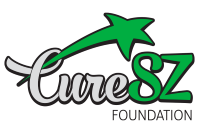
Dr. Craig Chepke, Member, Board of Directors, The CURESZ Foundation, Private Practice Psychiatrist and Adjunct Assistant Professor of
Psychiatry, University of North Carolina School of Medicine
Tardive Dyskinesia: Impact on Patients’ Lives
I was teaching a psychiatric physician assistant about Tardive Dyskinesia (TD) recently, and he told me his clinical supervisor, a seasoned psychiatrist near retirement, had expressed the sentiment, “I don’t know why everyone gets so worked up over TD— it’s nowhere near as bad as I used to see it in the state hospital. You young people just have too much of an emotional reaction to things.” America has recently struggled with a long-overdue reckoning with social injustice, and I hope that the medical field can also change how it responds to the suffering people with TD endure as well.
There are profound social and occupational consequences that people with TD face. One of my patients is a smart, hardworking 49-year-old woman who works in an office setting. She’d long felt she was hitting “the glass ceiling” trying to climb the corporate ladder as a woman in a male-dominated profession. When she developed TD, she was terrified it would be yet another barrier to her superiors and coworkers taking her seriously. She was so self-conscious that she might be having involuntary facial movements without her noticing it, she set up her smartphone at her desk to record her face all day long. She would scrub through the video at lunch or after work, and at any sign of movement, she’d begin crying and despair that she’d never achieve her career goals.
She remarked that she felt lucky that she had a good job when she developed TD because she didn’t think anyone would hire her for even an entry-level position with TD. I have had other patients with TD feel discriminated against when applying for both blue- and white-collar jobs, and a recent clinical trial studied this situation1. Actors were filmed participating in a scripted interview that had two versions: one in which the actor imitated facial movements consistent with mild to moderate TD and another in which he did not. The 800 people were evenly randomized to watch either the imitated TD version or the non-TD version, and all participants were asked questions about their impressions of the interviewee in regards to employment, friendship, or dating.
The study’s results were disheartening, if not surprising. While about 65% of people shown the non-TD version felt the interviewee would be suitable for a client-facing job, just 25% of people who watched the same actor say the same words in the same way— but with apparent mild to moderate involuntary facial movements— thought he would be appropriate for the same job. The study also showed the participants perceived the actors mimicking TD as significantly less interesting, less friendly, and less favorable dating partners.
The 65 years that preceded the approval of VMAT2 inhibitors were filled with futility in treating TD, until minimizing or ignoring it became a habit. As with any suffering we turn a blind eye to, there are consequences we don’t perceive until a light is shined on them. Healthcare providers cannot give our patients with TD a job. Still, with safe and effective treatments now available, there is at least one form of social injustice we can remedy far more easily than most of those our society currently faces.
- Ayyagari, et al. “115 An Experimental Study to Assess the Professional and Social Consequences of Mild-to-Moderate Tardive Dyskinesia.” CNS Spectrums 25.2 (2020): 275-275.

